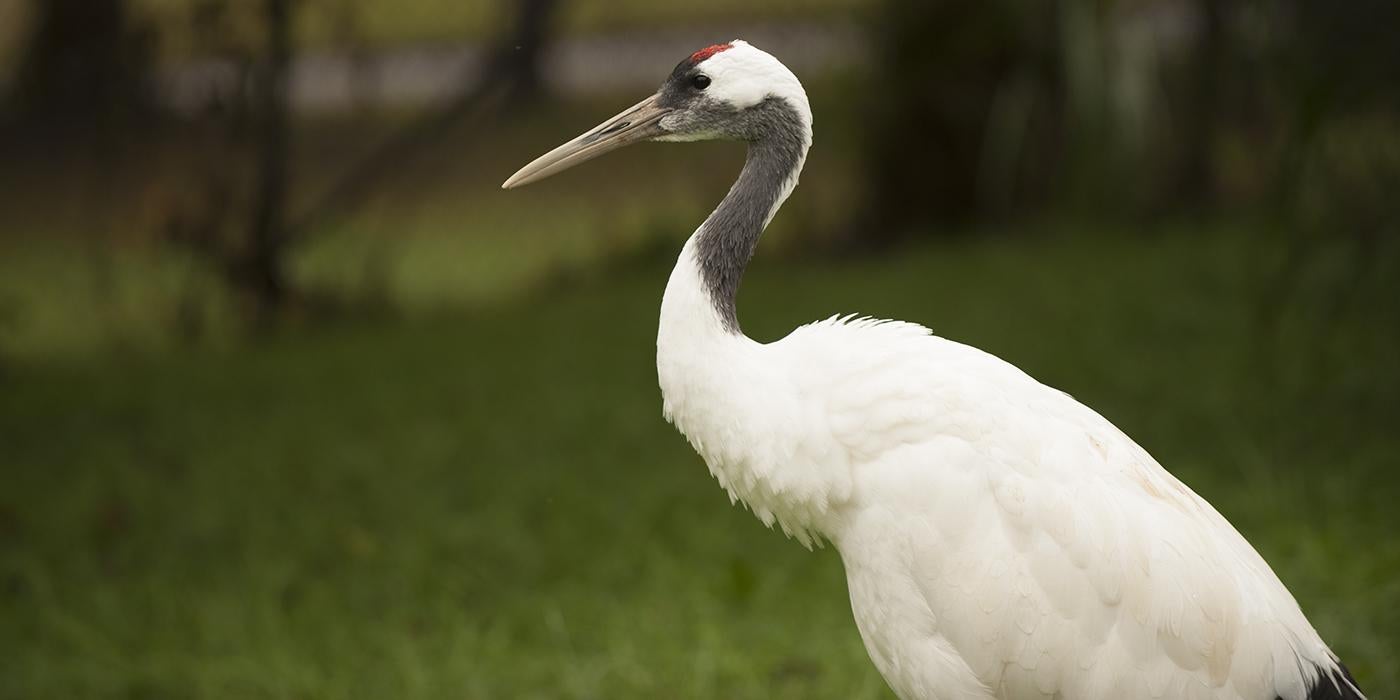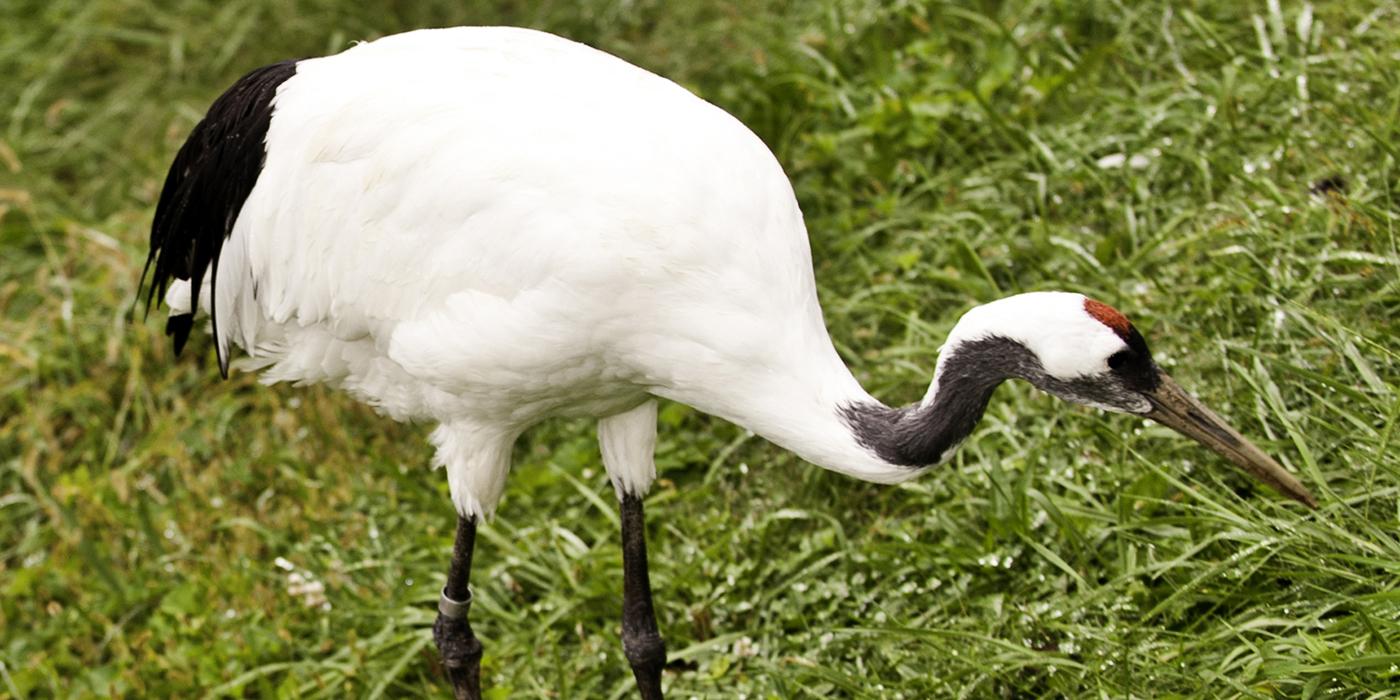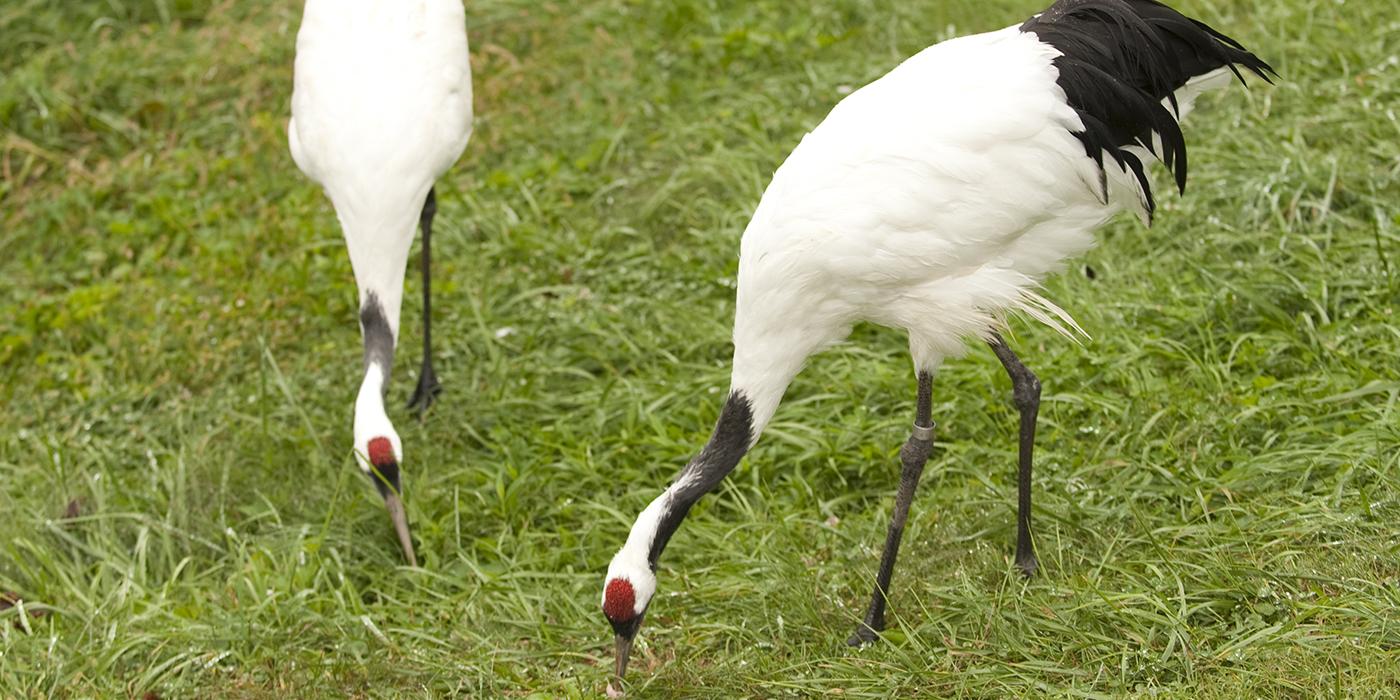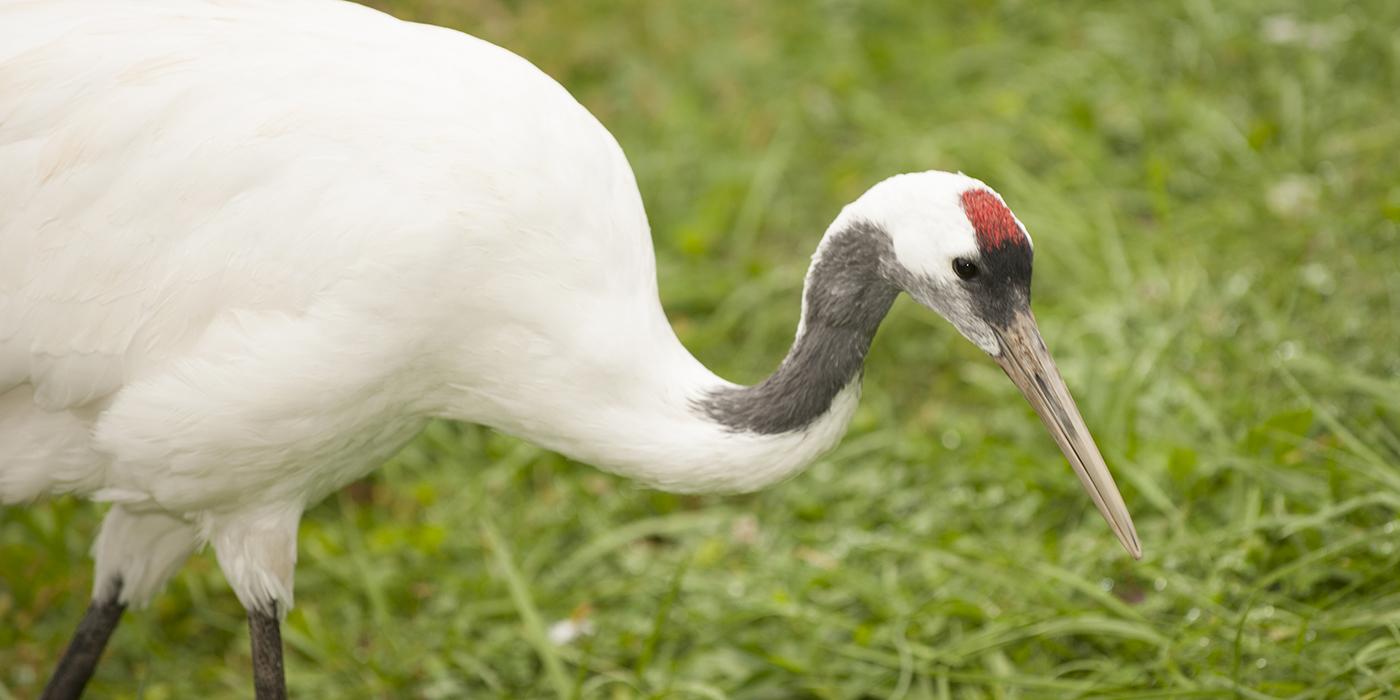Physical Description
The red-crowned crane has snow-white primary feathers with a black face and neck. White feathers extend from behind the eyes to the nape, and a red patch tops the crane's head, giving it its name. The majority of the body is pure white with the exception of black secondary and tertiary feathers. The red-crowned crane has a deep green bill and a long, sharply angular beak for spearing its prey. Both males and females are the same color, and males tend to be slightly larger.
Juveniles have a combination of white, partly tawny, cinnamon brown and/or gray plumage. The neck collar is gray to coffee brown, the secondary feathers are dull black and brown, and the crown and forehead are covered with gray and tawny feathers. The legs and bill are similar to those of adults but lighter in color. The primary feathers are white, tipped with black, as are the upper primary coverts. At two years of age, the bird's primary feathers are replaced with all white feathers.
Size
Native Habitat
Red-crowned cranes are highly aquatic cranes with large home ranges in southeastern Russia, northeast China, Mongolia and eastern Japan. They feed in deeper water than other cranes. They also forage regularly on pasturelands in Japan, and in winter they use coastal salt marshes, rivers, freshwater marshes, rice paddies and cultivated fields. These cranes prefer to nest in marshes with relatively deep water and standing, dead vegetation.
Red-crowned cranes are well adapted to cold temperatures. The Russian and Chinese populations mainly winter in the Yellow River delta. the coast of Jiangsu province, China, and the Korean Demilitarized Zone. In winter and on passage, the birds occur in wetlands, including tidal flats, saltmarshes, rivers, wet grassland, saltpans and aquaculture ponds. These cranes are migratory. The Japanese population, however, is non-migratory.
Lifespan
Lifespan in the wild is not well documented, but in human care the median age for both sexes of red-crowned cranes is 15.1 years.
Communication
Food/Eating Habits
The omnivorous birds seek out sustenance in marshes and feeds on a variety of invertebrates and small aquatic invertebrates, fish, amphibians, rodents, reeds, grasses, heath berries, corn and other plants. In the winter, they move to paddy fields where they feed on rice. During the winter, the Japanese population feeds on corn at artificial feeding stations. Cranes in managed populations are fed crane pellets, mealworms, earthworms, crickets and small fish.
Social Structure
Reproduction and Development
Red-crowned crane pairs are generally monogamous. Nests are built on wet ground or in shallow water. Females usually lay two eggs, and incubation (by both sexes) lasts 29 to 34 days. The male takes the primary role in defending the nest against possible danger. Chicks fledge, or take their first flight, at about 95 days. When the young cranes are three months old, they accompany their parents while looking for food in the wetlands. They are able to fly by autumn. Families stay intact until the next breeding season when the young adults leave the parents.
Conservation Efforts
Red-crowned cranes are the second-rarest species of crane, the whooping crane of North America being the rarest. The key threat to red-crowned cranes is the loss and degradation of wetlands in their breeding and wintering grounds, as human development, principally for conversion to agriculture but also industrial and economic development, encroaches rapidly on the wetlands that these large birds require.
This loss of habitat is leading to the over-concentration of cranes at a few sites. There are 1,700 to 2,700 red-crowned cranes in all of Eastern Asia, according to the International Union for Conservation of Nature’s Red List of Threatened Species.
Red-crowned Cranes at the Smithsonian Conservation Biology Institute
The Smithsonian Conservation Biology Institute was part of a program that donated red-crowned crane eggs, which were flown to Russia and raised in the Khinganski Nature Reserve. The offspring were later released into the wild. This program sent about 150 eggs between 1995 and 2005.
The program has been put on hold in order to concentrate on different crane conservation programs in Russia, such as education. Without a doubt, the international efforts of Russia, China, Japan and Korea are needed to protect the species from extinction. The most pressing threat is habitat destruction, with a general lack of remaining pristine wetland habitat for the species to nest in.
SCBI is one of the few centers with the expertise and space to manage cranes. The development of artificial insemination and egg sexing has allowed SCBI to successfully breed cranes that other facilities could not, due to behavioral or physical limitations. In addition, the large facility in Front Royal, Virginia, allows for the housing of singletons. There are no reintroduction programs for red-crowned cranes at this time.
Currently the red-crowned cranes at SCBI are not recommended for breeding by the Species Survival Plan, due to a nationwide lack of space combined with the overall lower genetic value of some of the individuals. SCBI received a juvenile male for pairing with a single female. Once the male reaches sexual maturity, at approximately 3 years of age, this pair will be bred. SCBI has produced five red-crowned crane chicks over the last 30 years.
Help this Species
- Support organizations like the Smithsonian’s National Zoo and Conservation Biology Institute that research better ways to protect and care for this animal and other endangered species. Consider donating your time, money or goods.
- Share the story of this animal with others. Simply raising awareness about this species can contribute to its overall protection.
- Less is more. Cut down on the demand for resources by consuming less. Buy only what you need, and look for pre-owned or repurposed items before purchasing something brand new.






